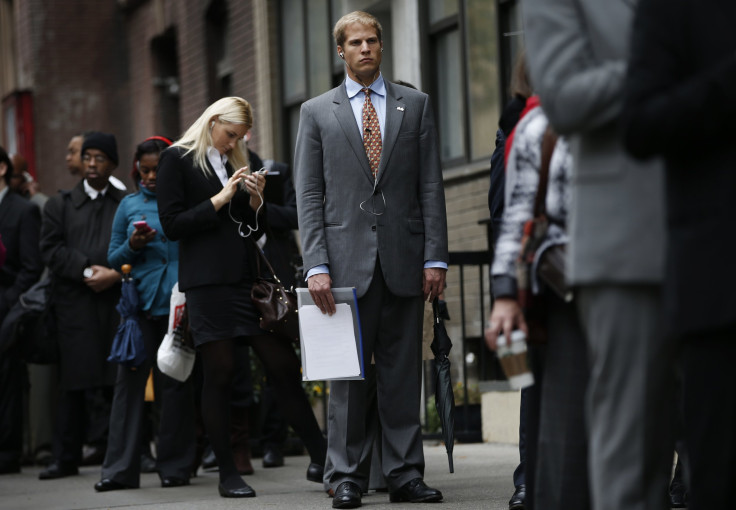Coronavirus Economy: US Loses More Than 20 Million Jobs In April, Pushing Unemployment to 14.7%

KEY POINTS
- The unemployment rate was the highest since the Great Depression
- The rates for whites, Hispanics and Asians hit record levels
- The March to April increase was the largest since the government began collecting statistics in 1948
The U.S. lost 20.5 million jobs in April, pushing the unemployment rate to 14.7% as the coronavirus took its toll on the economy, the Labor Department reported Friday. The rate was the highest since the Great Depression.
Experts had been predicting unemployment as high as 20% as more than 33 million initial unemployment claims were filed since mid-March. In February, the unemployment rate stood at a half-century low at 3.5%.
“In a season of unrelenting dire news, today’s jobs report delivered the single most devastating message yet. In just one month, COVID-19 wiped out an unimaginable 20.5 million jobs, or 13% of the economy, taking the country’s payrolls back to 2011 levels,” Andrew Stettner, senior fellow at the Century Foundation, said in an email to IBTimes. “For perspective, today’s report is more than tenfold worse than the previous all-time high of 1.95 million job losses in September 1945.”
He added: “Perhaps most troubling of all, the April jobs report offers the first true glimpse of which Americans have been hit the hardest by the economic carnage – and, to little surprise, it is the most vulnerable workers who are bearing the brunt of hardship.”
The COVID-19 pandemic forced the closure of businesses and factories across the country as the virus sickened hundreds of thousands, killing more than 75,000, and state and local officials ordered Americans to stay home to stem spread of the pathogen.
The Bureau of Labor Statistics reported employment fell sharply in all major industry sectors, with leisure and hospitality taking the hardest hit. The April rate was up 10.3 percentage points from March and was the largest month-to-month increase since statistics were first collected in 1948.
The number unemployed increased by 15.9 million to 23.1 million last month.
Joblessness among adult men rose to 13% and to 15.5% among adult women. The rate for teenagers hit 31.9%.
Among racial groups, the rate hit record highs for whites at 14.2%; for Asians, 14.5%, and for Hispanics, 18.9%. For blacks, the rate was 16.7%.
More than 18 million people reported temporary layoffs in April while the number reporting permanent job losses could be as high as 2 million, with the labor force participation rate falling by 2.5 points from March to 60.2%, the lowest level since January 1973 when it was 60%. Total employment fell by 22.4 million to 133.4 million, meaning only slightly more than half of Americans (51.3%) were employed. Some 9.9 million people were not currently in the labor force but want a job, nearly double the March total.
“With some 18 million Americans being on temporary layoff, it is reasonable to assume that a number of these posts, we don’t know how many, will be filled once stay-at-home restrictions are lifted,” said Mark Hamrick, senior economic analyst at Bankrate.com. “This will be among the key areas to watch for possible signs of improvement in the weeks and months to come.
“If we thought the worst we’d ever see with economic data would be during the financial crisis and Great Recession, the virus proved us wrong.”
The average workweek increased by 0.1 hour while hourly wages increased by $1.34 to $30.01.
© Copyright IBTimes 2025. All rights reserved.






















